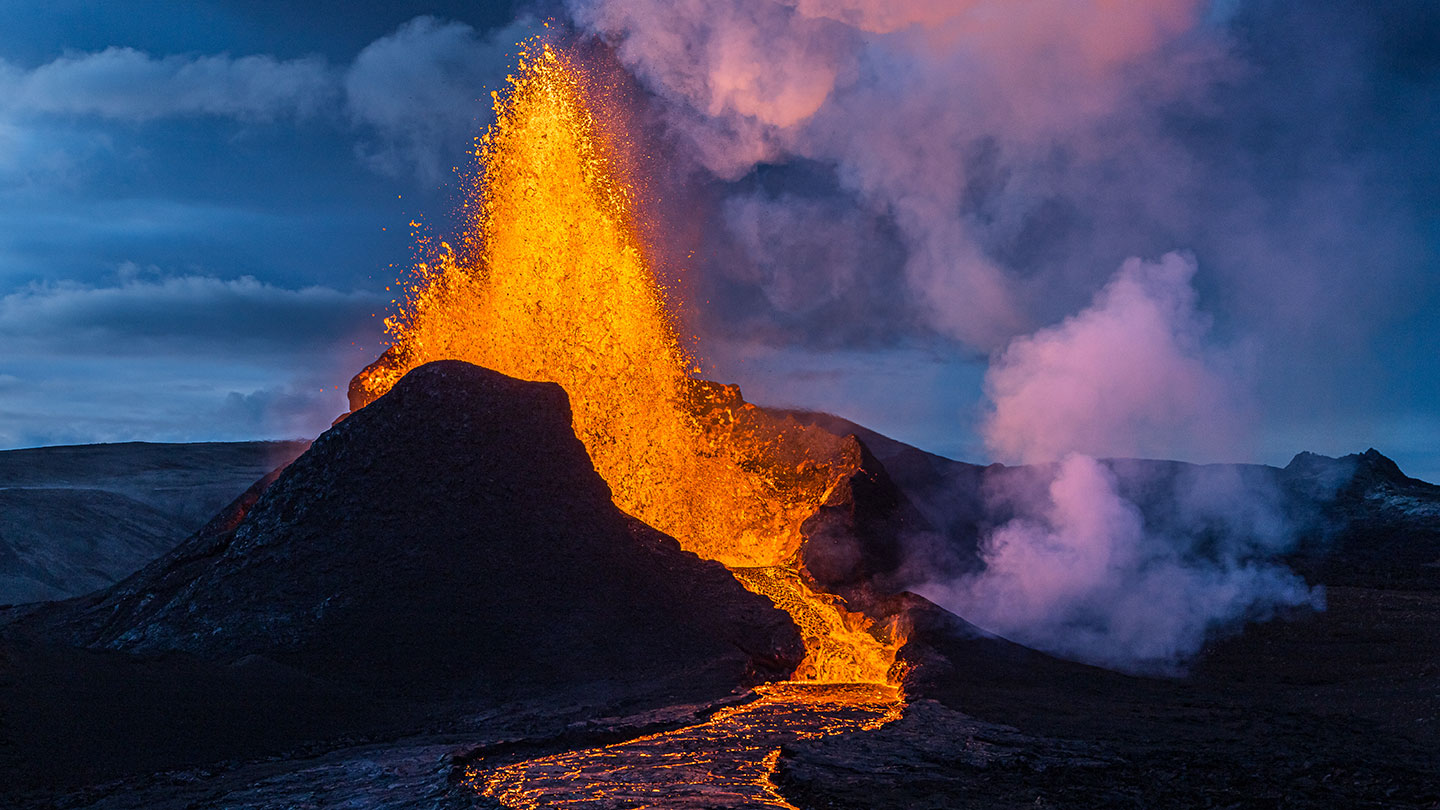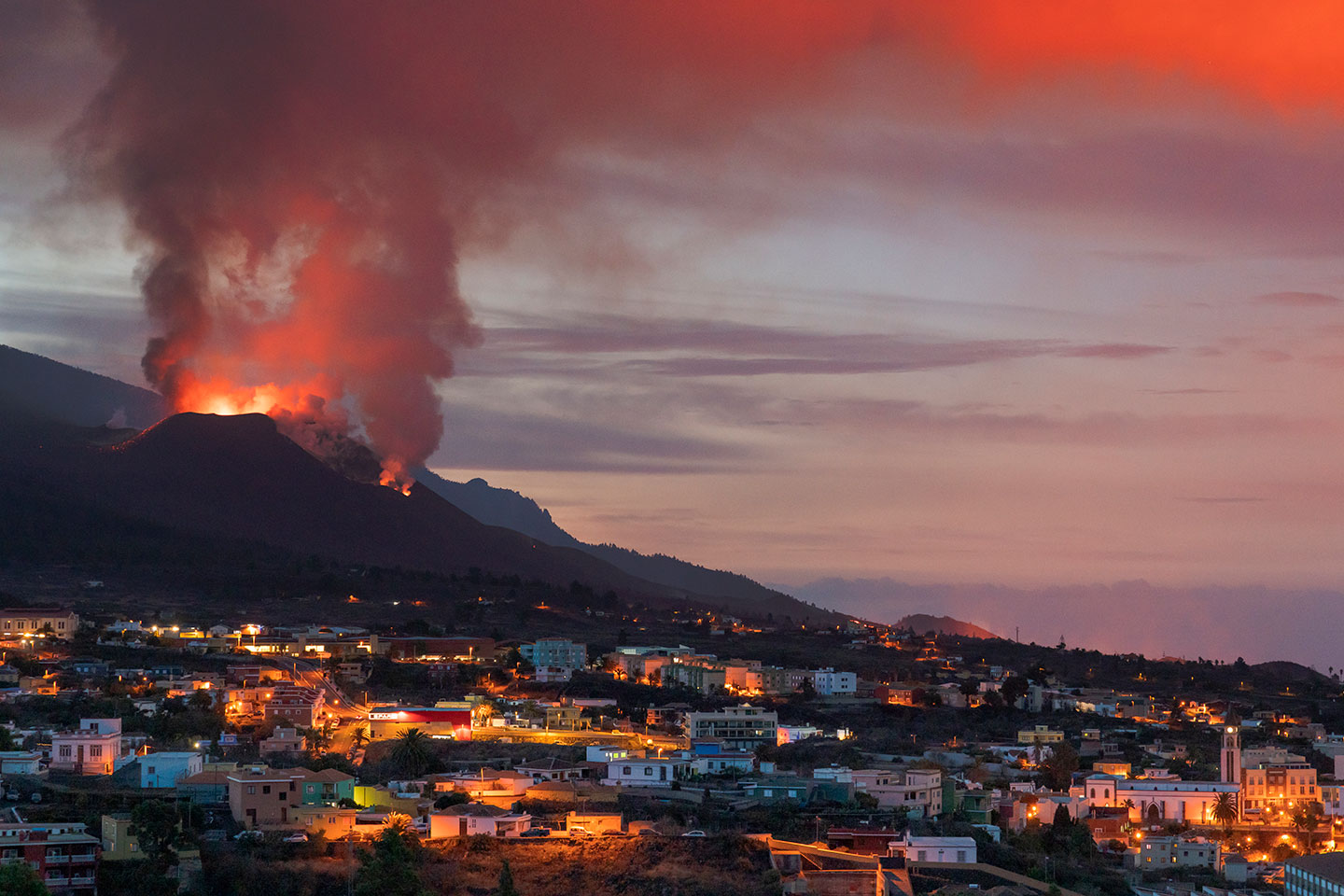Explainer: How volcanoes erupt
An influx of new magma or gush of gas can trigger an eruption

Iceland, which sits at a place where two tectonic plates are drifting apart, is known for its volcanoes. Molten magma becomes lava once it reaches the surface. Once cool, lava rocks can reveal what happened inside the volcano.
Hafsteinn Karlsson/500px/Getty Images
Some 640,000 years ago, a massive eruption rocked the land that, today, is Yellowstone National Park. The eruption spewed ash across much of the area that’s now the United States. It ejected 6,000 times the volume of the deadly 1980 Mount St. Helens eruption in Washington. And it created a crater that is 45 kilometers wide (28 miles) and 85 kilometers (53 miles) long.
There’s little risk of another massive eruption anytime soon, but the Yellowstone area is still volcanically active. “Yellowstone’s had lots of small eruptions since,” says Christy Till. A volcanologist, she works at Arizona State University in Tempe. But compared with Yellowstone’s long-past big eruptions, these smaller events are more “like a small burp,” she says.
By studying Yellowstone’s rocks, Till and her team discovered that the processes that kicked off Yellowstone’s most recent big eruption may have taken less than a year. Other rocks formed by lava are helping researchers continue to learn about eruptions across the globe — past and present.
Plates and hot spots
Volcanoes occur at specific types of places on Earth, notes Teresa Ubide. She’s a volcanologist at the University of Queensland in Brisbane, Australia. At these places, features of our planet’s geology allow magma — molten rock from within the Earth — to break through to the surface. (After it emerges, magma is known as lava.)
Magma comes from the mantle, the layer sandwiched between Earth’s core and its thin outer crust. The mantle is typically solid and can melt to form magma. The Earth’s core heats the mantle from the bottom. In some spots, heated rock — which is less dense than the surrounding mantle — rises toward Earth’s surface.
This regularly happens where the Earth’s tectonic plates are drifting apart. There, the mantle pushes through the gap and melts, making magma. For instance, such magma feeds volcanic eruptions at an undersea rift between plates that runs down the middle of the Atlantic Ocean. This rift breaks the surface at Iceland, causing regular eruptions there.
The mantle can also melt where one tectonic plate plunges beneath the edge of another. This is called subduction. As the subducting plate dives under the other plate, it brings water with it. That water can trigger melting. This sort of mantle melting typically makes the most explosive volcanoes, Ubide says. It occurs at spots on the western coasts of North and South America. Mount St. Helens is an example of this type of volcano.
Other places where the mantle can melt and push through the crust are those where the Earth is hotter than typical beneath the surface. This is true for Hawaii in the Pacific Ocean. “Geologically speaking, it’s in the middle of nowhere,” Ubide says. “But it has the biggest heat anomaly underneath, and that’s why you get volcanism.”
Sometimes magma can get stuck on its way to the surface. It can sit in melted pockets at depths stretching down to the mantle. At some places, magma can hang around for tens, hundreds or thousands of years. But in others, magma can move from mantle to crust in days or hours.
Gassy magmas
Till’s team has examined reports on nearly 90 eruptions spanning prehistoric to modern times. The researchers found a few eruption triggers related to gas that’s dissolved in the magma.
What happens in a volcano is similar to what happens in a bottle of soda, Till says. Just like magma, bottled soda contains dissolved gas. This gas stays dissolved because it’s bottled under high pressure. But when you open a bottle, the pressure in the bottle drops. The gas can no longer stay dissolved. “Those bubbles make a big foam,” she says. “If you shake up your soda, you will get it to explode out the top.”
When volcanic eruptions happen, it’s generally because gas can’t stay dissolved in the magma and bubbles form.
Bubbles can form when a new batch of magma joins a pocket of magma that’s been sitting around below the surface. Bubbles can also arise when some magma cools, crystallizing into rock. This forms what’s like a magma slushy within a volcano. Eventually there’s not enough magma to dissolve all the gas, so bubbles form. Only the molten liquid can erupt. But it won’t if there’s too much rock. So, just like a slushy that’s too icy and impossible to slurp, a magma with too much rock can get stuck within a volcano.
Eruptions can also happen when magma tries to move into a space that’s too small for it. The mounting pressure can force the molten rock up and out of the volcano. But, Till says, researchers think that most eruptions happen because of what happens to gas in the magma.
Volcanic messengers
Lava — erupted magma — contains crystals that started forming on the magma’s journey to the surface. By studying these crystals, researchers gain clues about the depths at which magma is stored and the processes that trigger an eruption, Ubide says. “It’s a bit like you understand the personality of a particular volcano.”
Researchers can combine this information with other messages they record at the surface to learn about what’s occurring below ground. A new injection of magma to underground pockets might be accompanied by earthquakes, for instance. Scientists can then use the location and depth of those earthquakes to track the ascent of magma, Ubide says.
Or the composition of gases sampled at the surface may reveal whether new magma has been added to that being stored underground. Ubide’s team found chemical signposts in lava rocks from a 2021 eruption in La Palma, an island in the North Atlantic Ocean. These chemical clues tracked with the magnitude of earthquakes and sulfur dioxide gas belched from the volcano.
Scientists hope to use these volcanic messages — rocks, gases and earthquakes — to catch the signs of a coming eruption sooner. That could give people more time to prepare. About 10 percent of the global population lives within 100 kilometers (60 miles) of an active volcano, Ubide says. “We cannot stop a volcano from erupting, but we can get as prepared as we can for it.”











